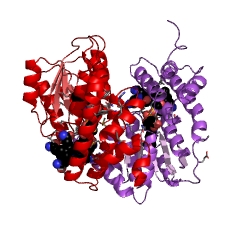| Synonyms |
5-methyltetrahydrofolate homocysteine methyltransferase, 5-methyltetrahydrofolate-homocysteine methyltransferase, 5-methyltetrahydrofolate-homocysteine S-methyltransferase, 5-methyltetrahydrofolate-homocysteine transmethylase, B12 N5-methyltetrahydrofolate homocysteine methyltransferase, B12-dependent methionine synthase, cobalamin-dependent methionine synthase, folate-dependent methionine synthase, Met6p, MetH, methionine synthase, methionine synthetase, methyltetrahydrofolate-homocysteine vitamin B12 methyltransferase, methyltransferase, methyltetrahydrofolate-homocysteine, MetS, MS, MS1, MTR, N-methyltetrahydrofolate:L-homocysteine methyltransferase, N5-methyltetrahydrofolate methyltransferase, N5-methyltetrahydrofolate-homocysteine cobalamin methyltransferase, N5-methyltetrahydrofolic-homocysteine vitamin B12 transmethylase, tetrahydrofolate methyltransferase, tetrahydropteroylglutamate methyltransferase, tetrahydropteroylglutamic methyltransferase, vitamin B12 methyltransferase |
| Comments |
Contains zinc and cobamide. The enzyme becomes inactivated occasionally during its cycle by oxidation of Co(I) to Co(II). Reactivation by reductive methylation is catalysed by the enzyme itself, with S-adenosyl-L-methionine as the methyl donor and a reducing system. For the mammalian enzyme, the reducing system involves NADPH and EC 1.16.1.8, [methionine synthase] reductase. In bacteria, the reducing agent is flavodoxin, and no further catalyst is needed (the flavodoxin is kept in the reduced state by NADPH and EC 1.18.1.2, ferredoxin¡ªNADP+ reductase). Acts on the monoglutamate as well as the triglutamate folate, in contrast with EC 2.1.1.14, 5-methyltetrahydropteroyltriglutamate¡ªhomocysteine S-methyltransferase, which acts only on the triglutamate. |


